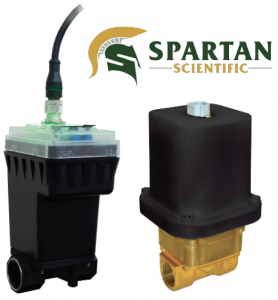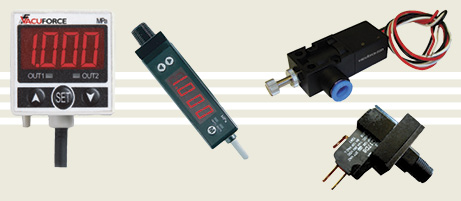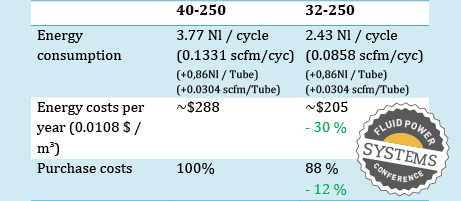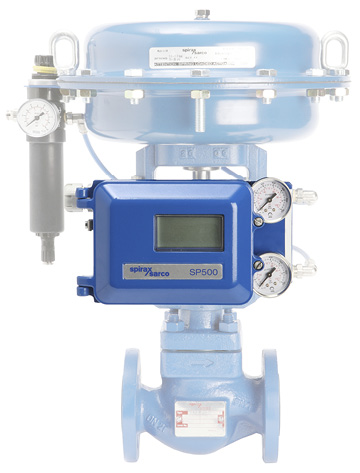Stepper Technology Boosts FireFighting Efficiency
 By Pat Byce, Marketing Coordinator, Spartan Scientific
By Pat Byce, Marketing Coordinator, Spartan Scientific
Flames begin to blaze and a fire engine pulls up within minutes, complete with professionals ready to help. The focus in an emergency is usually on crew response time, but what about their equipment? Is it also optimized to complete the task as quickly as possible when lives and property are at stake?
One area with potential for improvement concerns foam systems used for fire and combustion suppression. For many reasons, foam has been the fire-suppression agent of choice for flammable and combustible liquids. Foam is used to cool the fuel surface and saturate flammable materials, preventing reignition of fuel vapors while also preventing additional oxygen from reaching the fire.
A foam solution typically consists of three ingredients: water, foam concentrate, and air. Depending on the situation, fire crews are responsible for mixing, metering, and aerating these ingredients to correctly produce the required amount of foam solution with the appropriate dilution rate.
For example, 6% concentrates are mixed with water at a ratio of 94 parts water to 6 parts foam concentrate. This means 94 gallons of water is needed for every 6 gallons of foam concentrate. When mixing 3% concentrate, the correct mixture is 3 gallons of foam concentrate with 97 gallons of water. Both foam solutions provide the same performance characteristics. But a 3% foam concentrate is more concentrated than the 6% concentrate, requiring less product to produce the same result.
Common practice is to minimize the amount of foam concentrate needed to produce a foam solution. This allows the fire crew to maximize its storage space and either double its firefighting capacity or reduce the amount of foam used without compromising suppression capacity. Lower proportioning rates can reduce the cost of foam-system components and concentrate transportation.
Many critical variables come into play when obtaining the right mixture. It can be challenging when the job requires a wide operating range, such as controlling flow rates of 0.125 gpm (4 lpm) at 75 psi (5 bar) up to more than 90 gpm (340 lpm) at 250 psi (17 bar). Most flow meters can’t deliver accurate measurements across such a large range. To make matters worse, some truck manufacturers use valves with fixed orifices that require manual adjusting to reduce or increase the amount of foam concentrate in the line.
Spartan Scientific encountered this issue when working with a global fire truck manufacturer. The original equipment manufacturer had been using an old design that required three separate valves with fixed orifices to output various required foam concentrates. Spartan knew there had to be a way to use foam more efficiently while reducing the time it takes to extinguish fires.
Advanced stepper technology
With breakthroughs in self-contained media-separated electronic proportional flow control valves, also called stepper valves, Spartan immediately knew these devices could offer a solution.
Previously, achieving proportional control in electrically actuated valves with closed loop systems meant spending thousands of dollars on parts from multiple suppliers. Today’s stepper valves bring a new approach to controlling liquids and gases. For example, Spartan’s stepper valves are self-contained with control circuitry (including an M12 connector) embedding the motor and valve into the unit. Users can control flow rates automatically in an all-in-one, plug & play, ready-to-go device that eliminates the need to purchase a separate control unit, which can compromise performance and add significant expense.
With multiple positions (or steps), Spartan’s newest rendition precisely regulates flow output and only draws current when a change to media flow is required, maximizing energy savings.
The stepper’s onboard internal feedback constantly monitors the valve position. The elliptical shape of the tip is designed to create linearity in the change of flow rate brought on by the change in position of the valve stroke. The poppet has a specialized elliptical profile contour that protects the valve’s mechanical workings as it produces a linear flow through the precise valve orifice.
Control can be tailored to increase resolution. The ability to move in so many small steps allows an unprecedented level of reliability and repeatability.
A perfect fit for fire trucks
Spartan replaced all three of the truck manufacturer’s valves with one stepper valve. We were able to design a stepper valve that could accommodate the flow rates required for fire applications, from 0.125 gpm (4 lpm) to 90 gpm (340 lpm) for pressures ranging from 0 to 250 psi (17 bar) with a 1-inch (25-mm) orifice. The valve seat serves as both a positive stop and flow control for the fluid media, allowing fire crews to obtain a precise flow rate over thousands of positions, rather than the limited number of combinations from several fixed orifices.
The valve’s multiselection controller can directly communicate with a highway-addressable remote transducer-enabled flow meter, allowing the valve to accurately monitor and control the flow of media. This allows the truck operator to choose the percentage of foam on the fly in response to a firefighter’s command. Furthermore, closed loop feedback makes the stepper valve intelligent. It uses information from the flow meter to learn the desired settings and automatically open and close the valve along with changes to overall system operation, such as increases or decreases in pressure and varying pumps, to bring the flow back into the desired range.
Auto-adjusting to compensate for fluctuations in flow during foam and water dispensing allows the valve to compensate for addition or subtraction of auxiliary fire hoses. This maintains the preset percentage of foam concentrate and conserves the amount of foam dispensed. The truck manufacturer saw a huge cost and weight savings with this design. Greater precision and quicker adjustments offers first responders a more effective solution.
While the truck manufacturer and firefighters were thrilled with the improvement, stepper technology is beneficial for any application that requires accurate control of chemicals, such as car washes, general manufacturing, medical, food and drug, drinking water, agriculture, and fluid-temperature control. With today’s advanced stepper valves, applications are only limited by your imagination.







